Prior to starting third year we took time produce our 3×3 presentation set by Luca to help establish initial ideas and have 3 solid foundational ideas to potentially develop further.
We decided to look at different Themes that could really be stretched and pushed in loads of new and interesting ways, the first idea was inspired by Gothic architecture.
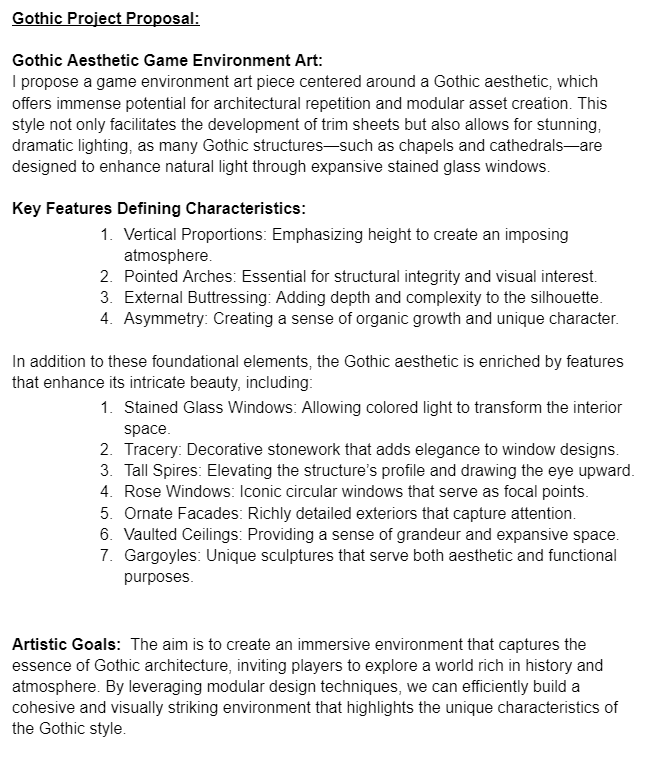

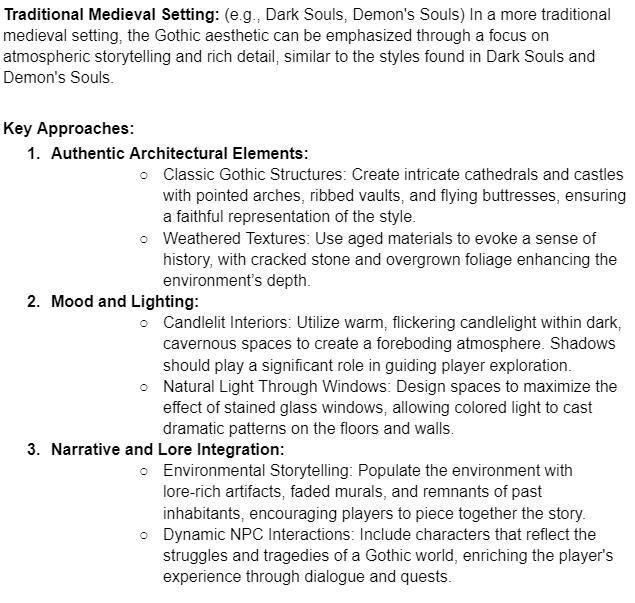
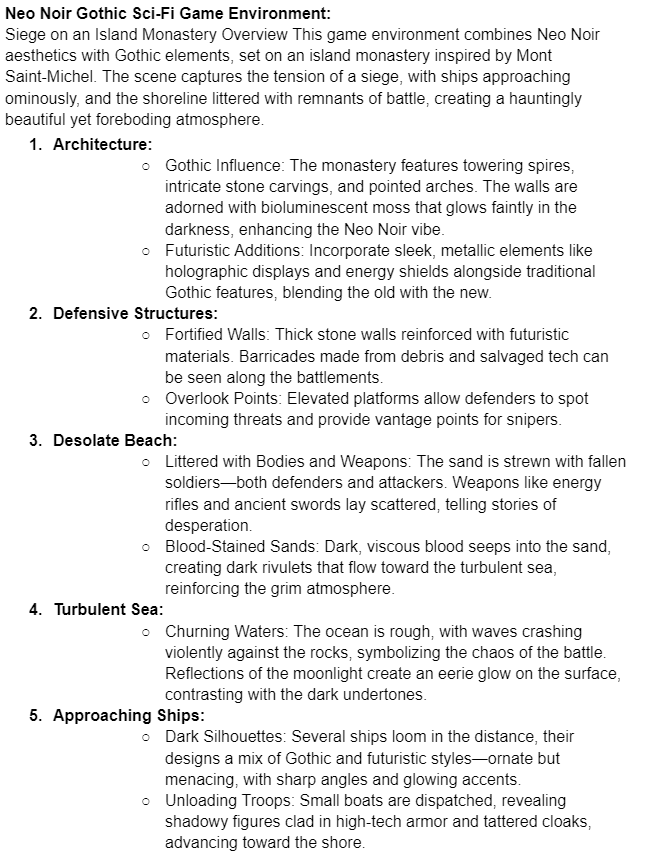
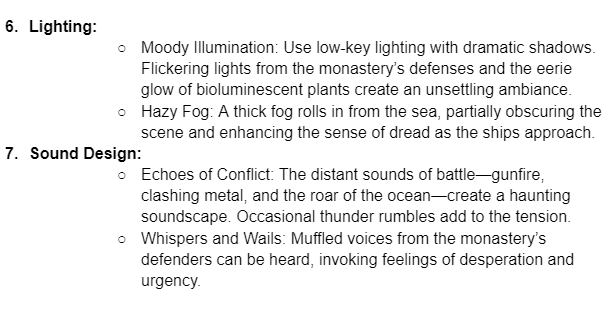
Here are the Initial Gothic proposal ideas that I developed over summer I enjoy world building and creating reason for my environments to support my implicit and explicit storytelling so I went into more depth with a potential scene idea.
You can look at Laura’s proposals for Lost Civilisation and East Asian aesthetic here:
Games Art- Final Major Project
We brought together our different initial research concepts to further develop and build a reference board for each to help further visualise the concepts. atmosphere, lighting and key aesthetics.
Reference Boards
I started by looking at real world examples of Gothic architecture in different countries to help establish further how it can be interpreted and built. I looked at different specific elements to reference from vaulted ceilings, rose windows, buttressing, facades, etc.
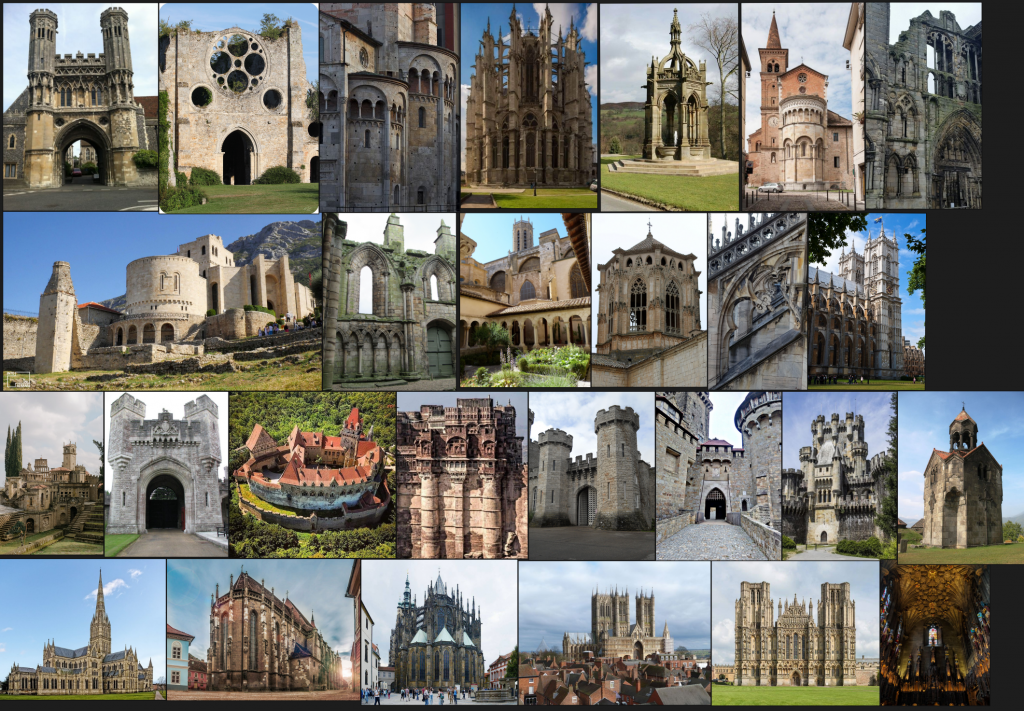
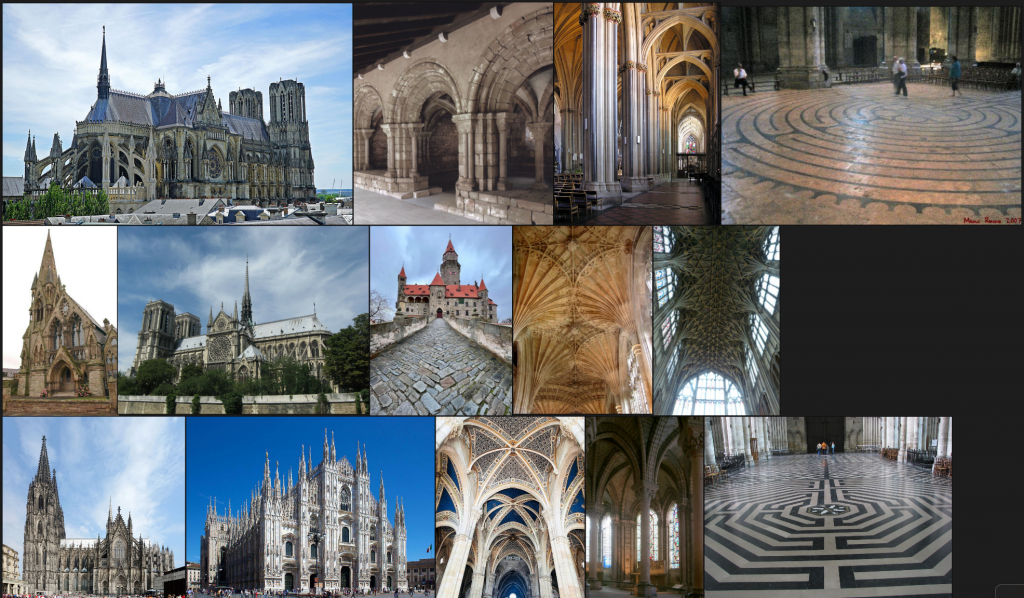
Gothic architecture exhibits regional variations influenced by local cultures, materials, and historical contexts. Here’s how Gothic styles differ across countries and regions:
1. France (The Origin of Gothic Architecture):
- Key Features:
- High verticality and elaborate detailing.
- Large rose windows and extensive stained glass.
- Extensive use of flying buttresses for structural support.
- Examples: Notre-Dame de Paris, Chartres Cathedral.
- Focus: Elegance, light, and height, emphasizing spiritual transcendence.
2. England:
- Key Features:
- Emphasis on horizontal lines and long naves.
- Decorative fan vaulting and Perpendicular tracery.
- Less dramatic use of flying buttresses compared to France.
- Examples: Westminster Abbey, York Minster.
- Focus: Harmony and decorative intricacy, with less height than French Gothic.
3. Germany:
- Key Features:
- Tall, narrow proportions and steeply pitched roofs.
- Use of vibrant stained glass and dark interiors.
- Strong vertical emphasis in towers and spires.
- Examples: Cologne Cathedral, Ulm Minster.
- Focus: Monumentality and grandeur, often in urban settings.
4. Italy:
- Key Features:
- Blends Gothic with classical Romanesque influences.
- Polychrome marble facades with intricate patterns.
- Smaller windows to suit the Mediterranean light.
- Examples: Milan Cathedral, Orvieto Cathedral.
- Focus: Ornamentation, color, and integration with local artistic traditions.
5. Spain:
- Key Features:
- Highly ornate and elaborate styles, often blending Moorish influences (Mudéjar).
- Use of intricate stone carvings and decorative pinnacles.
- Inclusion of large retablos (altarpieces) and unique vaulting styles.
- Examples: Burgos Cathedral, Seville Cathedral.
- Focus: Rich, detailed decoration and unique cultural fusion.
6. Eastern Europe:
- Key Features:
- Less emphasis on height and more on robust, fortress-like structures.
- Simplified decoration but with some ornate tracery and pinnacles.
- Influence from local traditions and Byzantine styles.
- Examples: St. Vitus Cathedral (Czech Republic), Matthias Church (Hungary).
- Focus: Adaptation of Gothic to colder climates and local architectural heritage.
7. Scandinavian Countries:
- Key Features:
- Use of timber for Gothic-style churches, known as stave churches.
- Simpler, more restrained ornamentation.
- Vertical elements inspired by traditional wooden architecture.
- Examples: Borgund Stave Church (Norway).
- Focus: Combining Gothic forms with local materials and techniques.
8. The Netherlands and Belgium (Flanders):
- Key Features:
- Civic Gothic architecture, including town halls and guildhalls.
- Use of brick (Brick Gothic) instead of stone in many areas.
- Flamboyant tracery and large windows.
- Examples: Town Hall of Leuven, Church of Our Lady (Bruges).
- Focus: Functional Gothic adapted to urban and practical needs.
9. Southern Europe (Portugal):
- Key Features:
- The Manueline style combines Gothic with maritime and Renaissance motifs.
- Ornate carvings inspired by exploration and nautical themes.
- Examples: Jerónimos Monastery, Batalha Monastery.
- Focus: A unique, regional expression of Gothic infused with symbolism of the Age of Exploration.
Summary of Variations:
- France: Verticality and light.
- England: Horizontal emphasis and intricate vaulting.
- Germany: Monumentality and urban dominance.
- Italy: Polychrome facades and classical influences.
- Spain: Moorish fusion and intricate details.
- Eastern Europe: Simplicity and fortress-like adaptations.
- Scandinavia: Wooden adaptations with vertical emphasis.
- Flanders: Brick Gothic and civic architecture.
- Portugal: Nautical-inspired Manueline Gothic.
Each region adapted Gothic principles to suit its climate, materials, and cultural identity, creating diverse interpretations of this iconic architectural style.

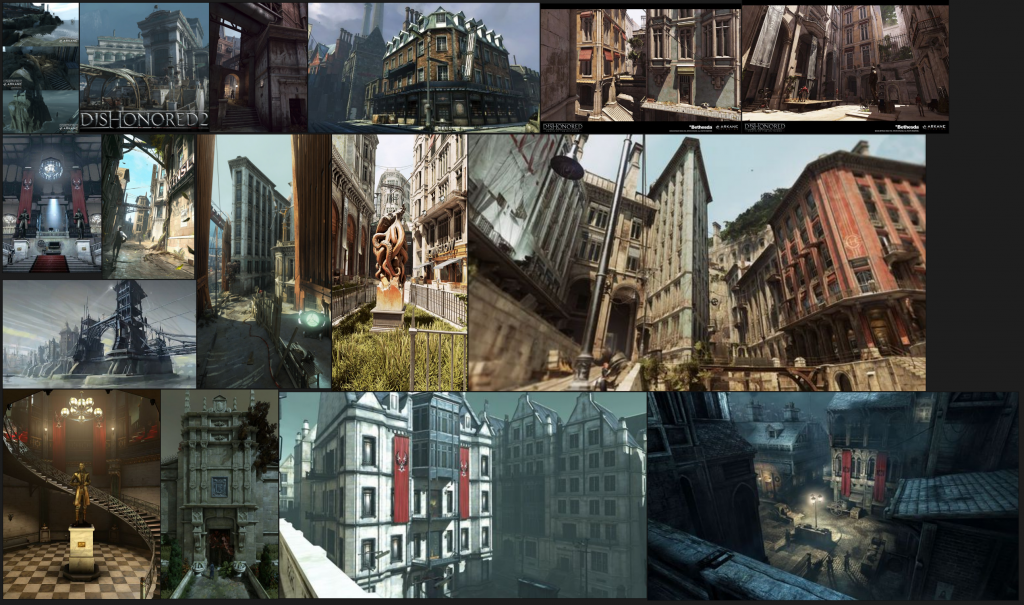
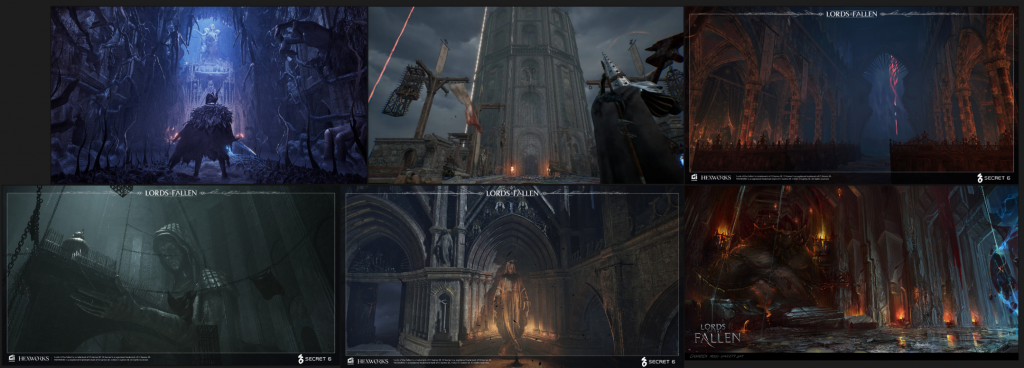
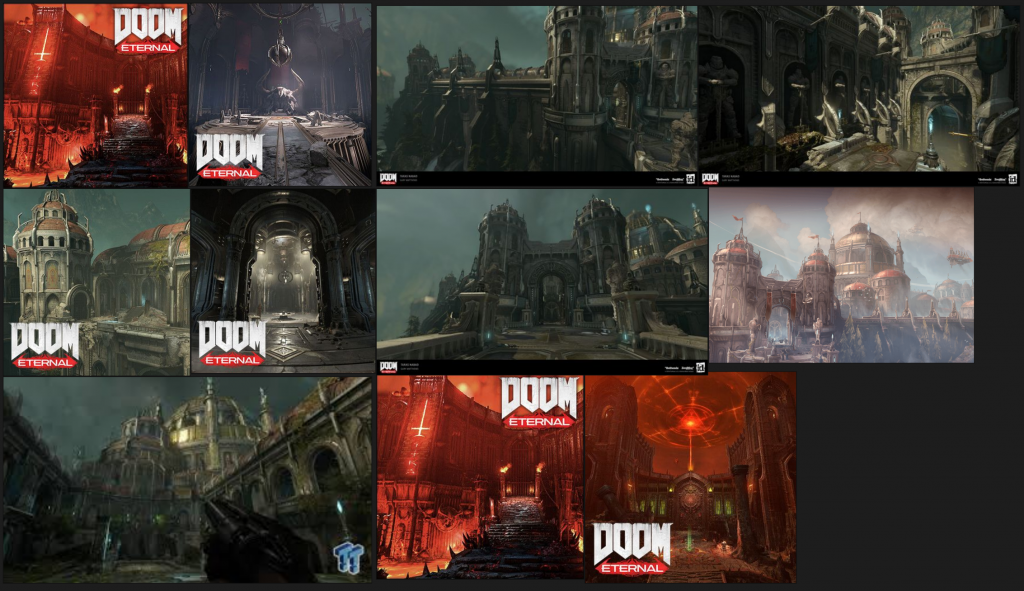
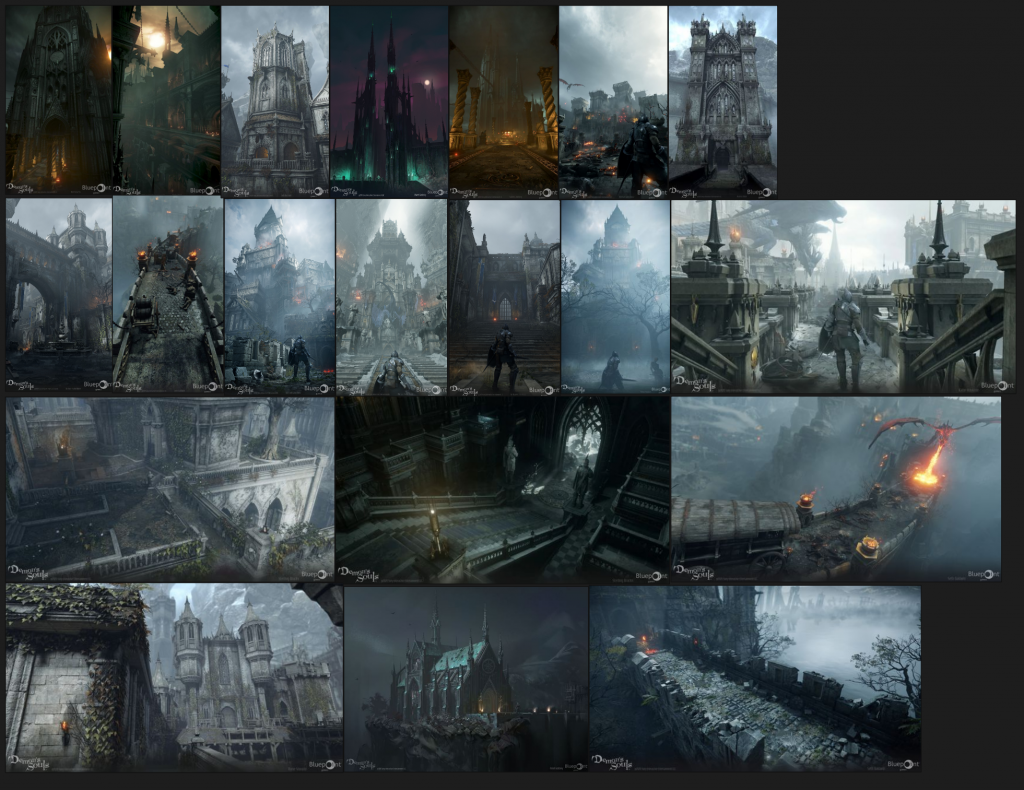
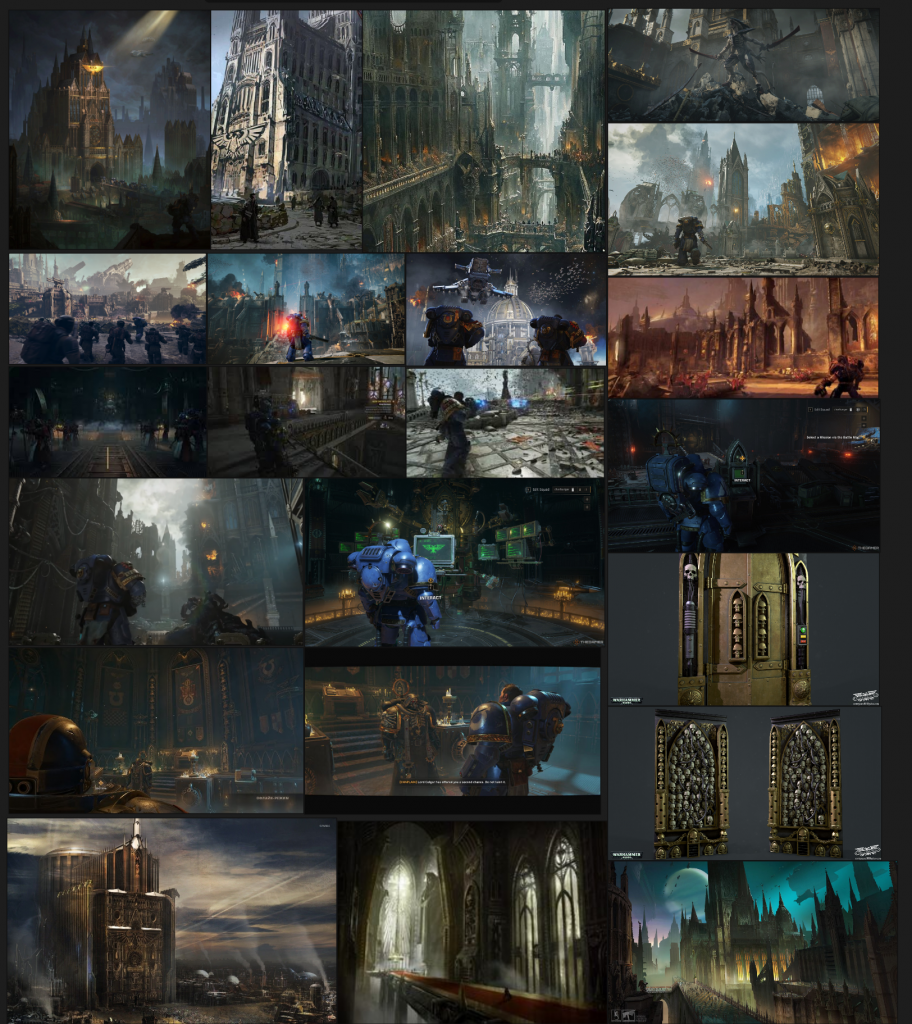
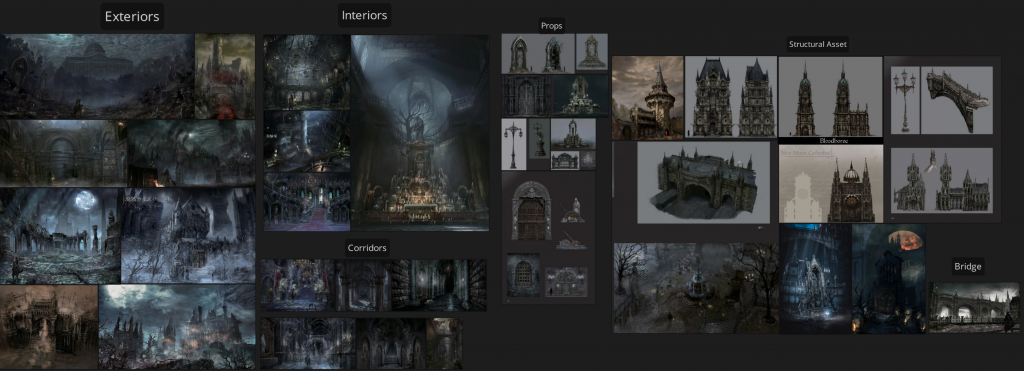
3×3 Project Proposal
Now that we have established 3 different themes and 2 variations to develop for each we start to build our 3×3 ensuring to break those proposals down into conscious and concise ideas that really express our thoughts and directions for each project.
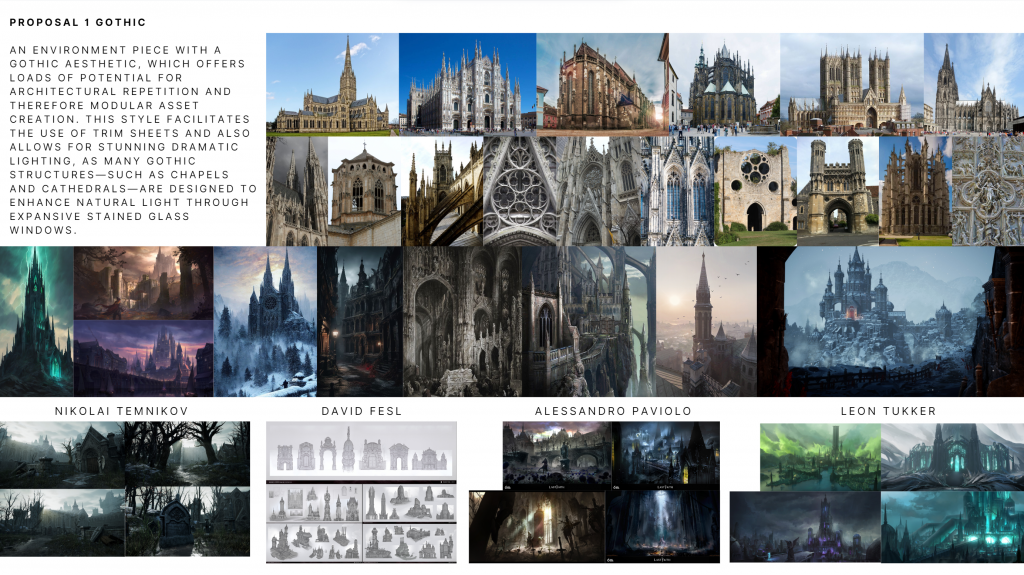
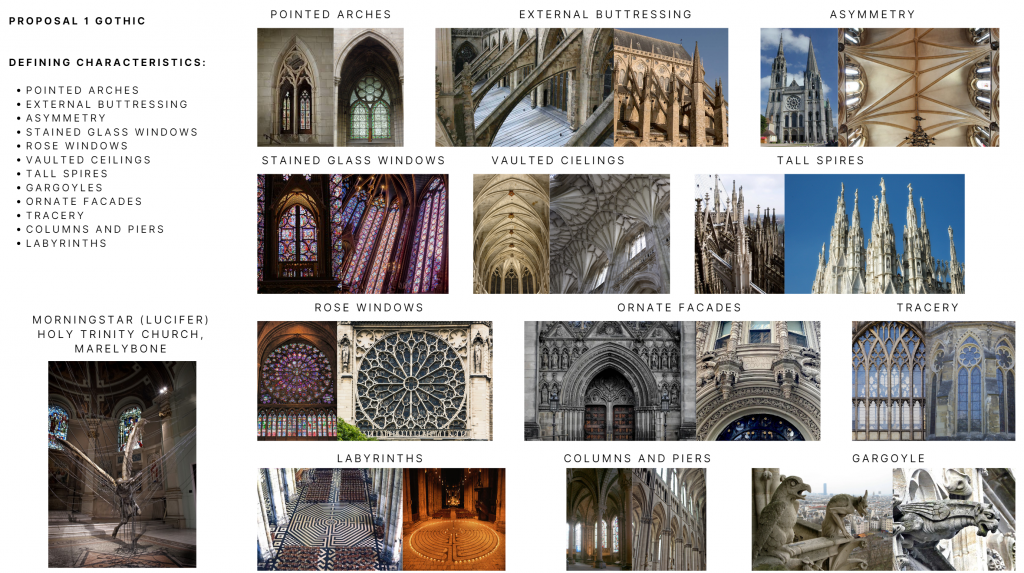
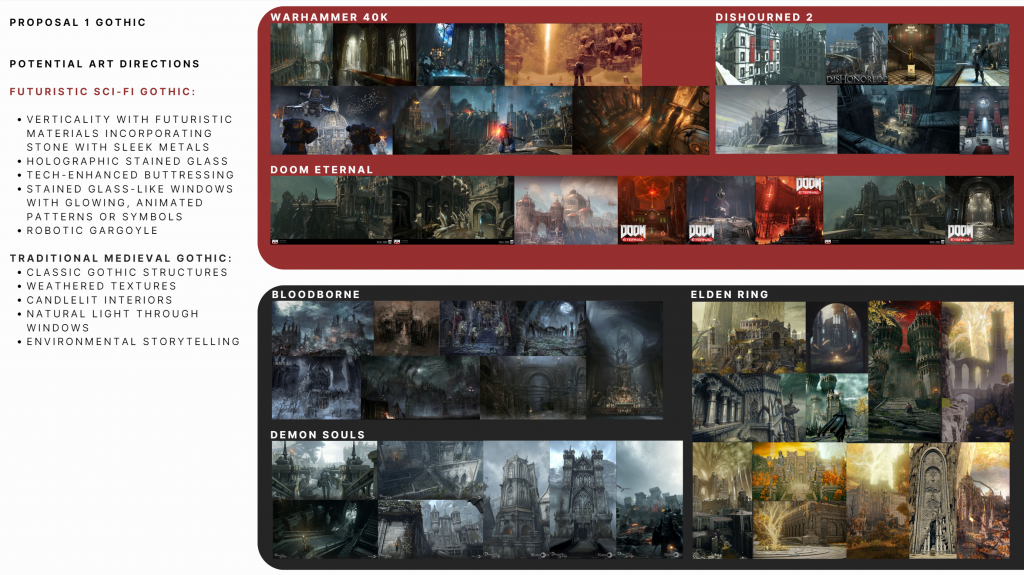
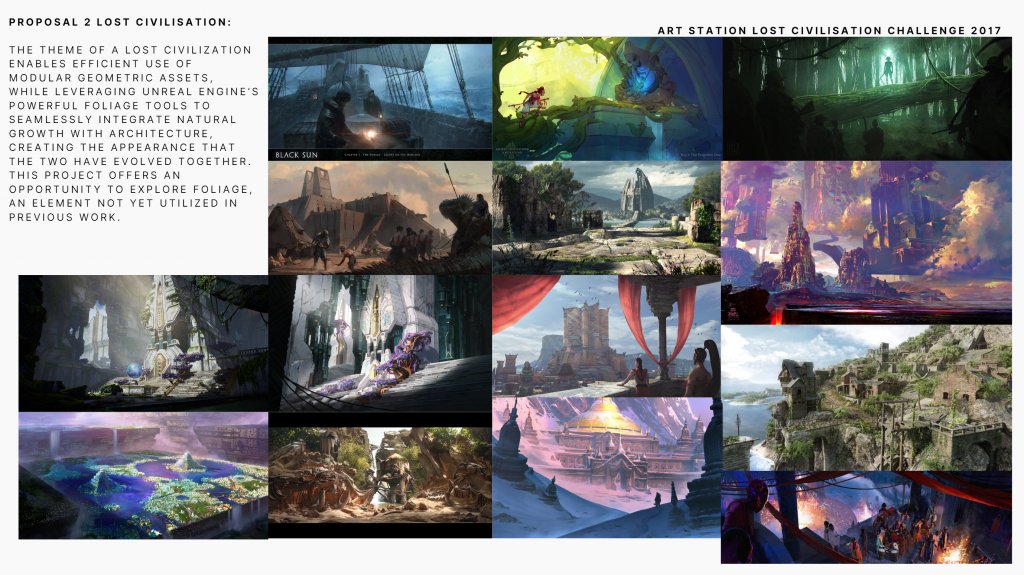
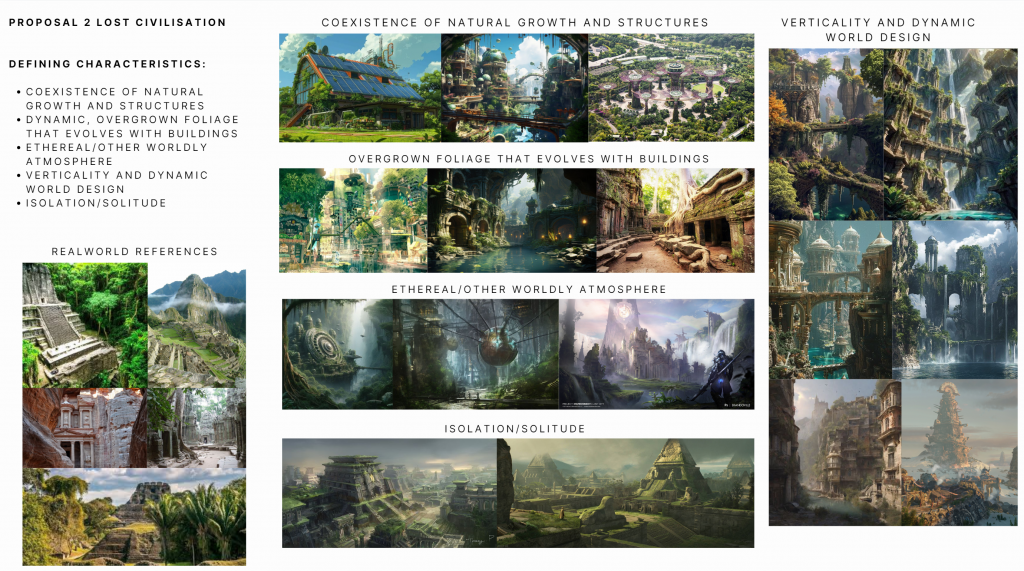

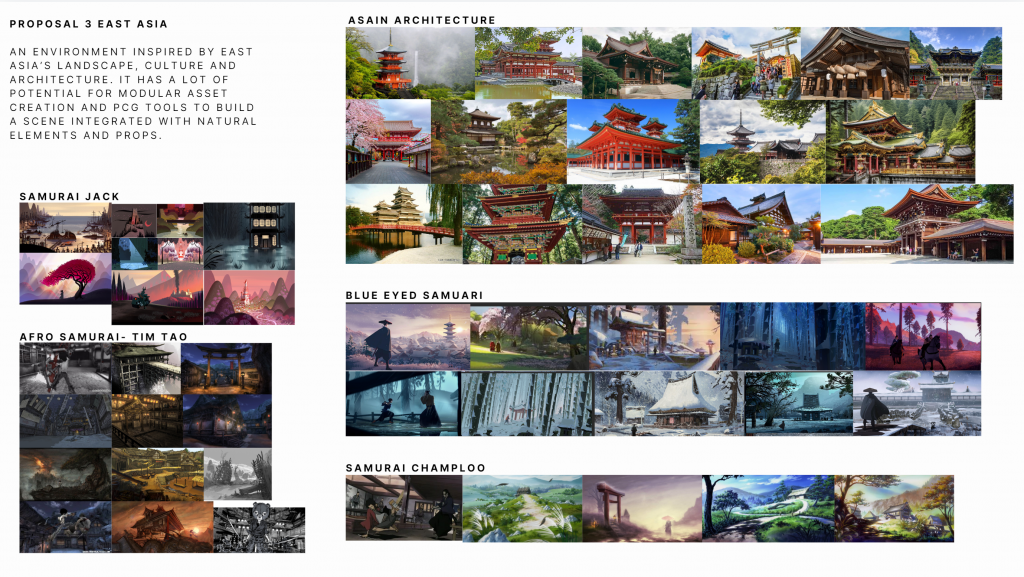
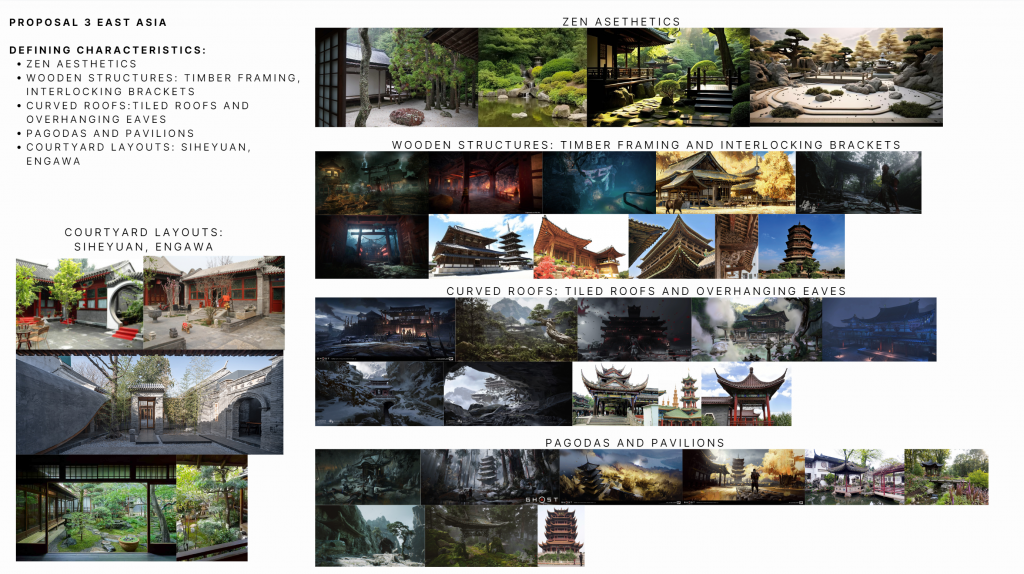
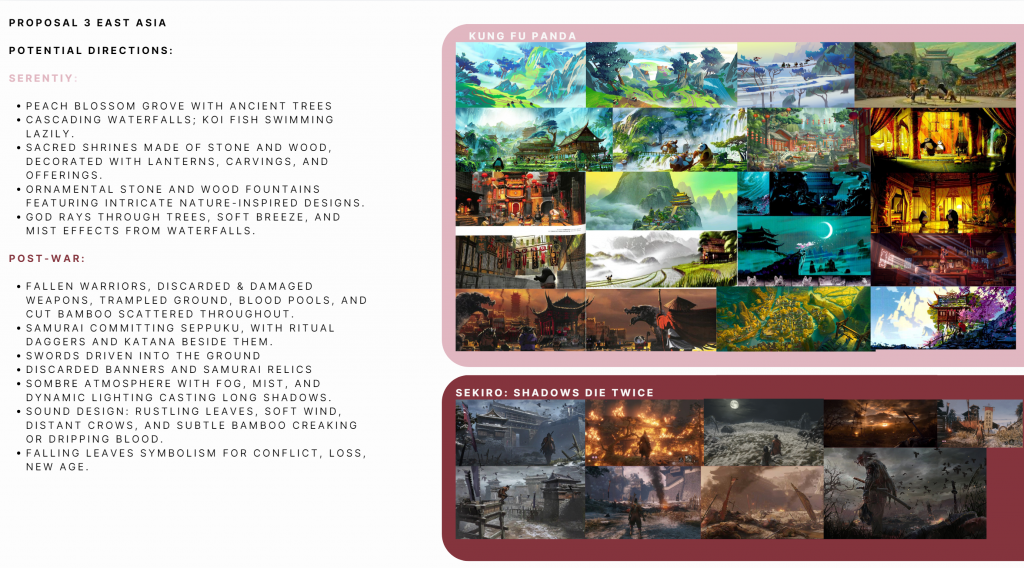
As you can see we tried to keep a consistent method to our breakdown, research and proposal of each idea. We start with initial concept proposal with loads of references from different real world and artistic interpretations of that theme. We then go on to defining characteristics of those Themes allowing us to establish what we need to have to sell the scene and hit the aesthetic benchmarks that a player would expect of the environment. Lastly we take all this and propose two different directions we can take the theme to make our work stand out and have an original take/feel to it.
Following the 3×3 we felt more drawn to the High Fantasy Lost Civilisation and the Gothic Sci-Fi.
Leave a Reply